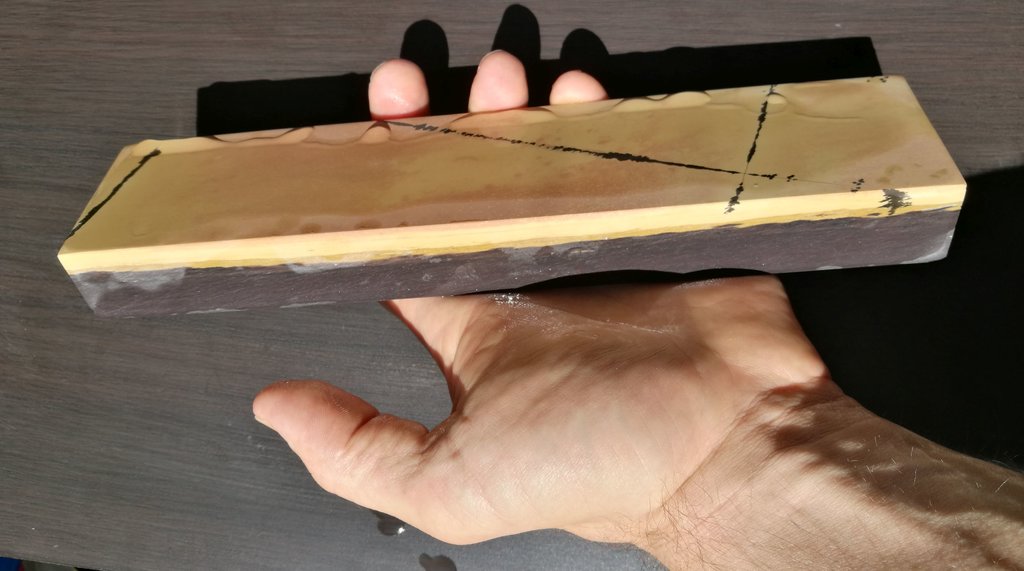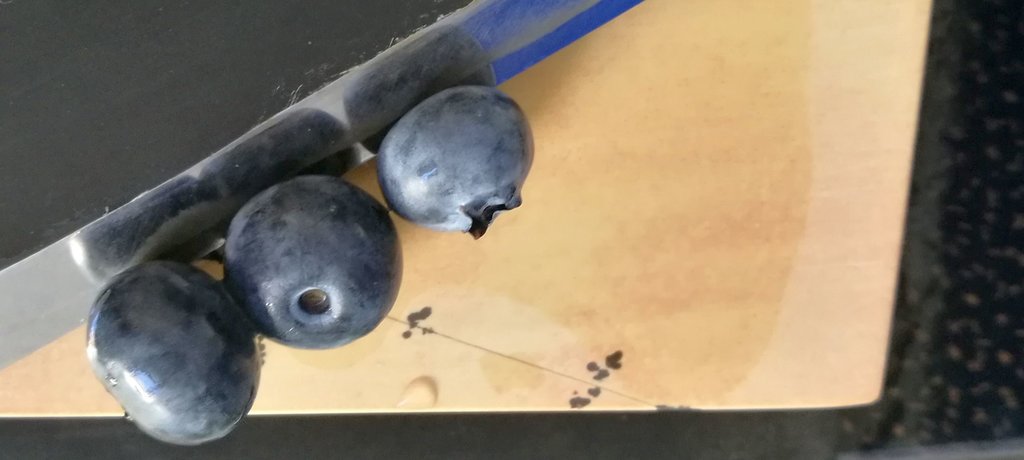Anything will cut the BBW, but the yellow coti can be difficult to cut if it’s a hard one. I usually use these for cutting stones.
I second those for cutting stones. I have even cut really hard Charnley Forest stone with those.
Anything will cut the BBW, but the yellow coti can be difficult to cut if it’s a hard one. I usually use these for cutting stones.
I am really enjoying your posts - thanks for sharing!
Thank you.I am really enjoying your posts - thanks for sharing!
Yes, these are better because the wire saw has a very large kerf width.A carbide grit hacksaw blade by stanley works very good too, around $8.
Last stone for a while. A stone out of this world (250x56x27mm). This stone is not a LPB. It is supersmooth, almost like a glass plate. Super fine with slurry and with water, I would rate it as a 16k stone or even more.
I am not sure, but I believe these stones are not from veins, that are known from Ol´Preu or Regné. Maybe they are from other mines that were run by Mr. Burton. Does anyone know something about this vein?
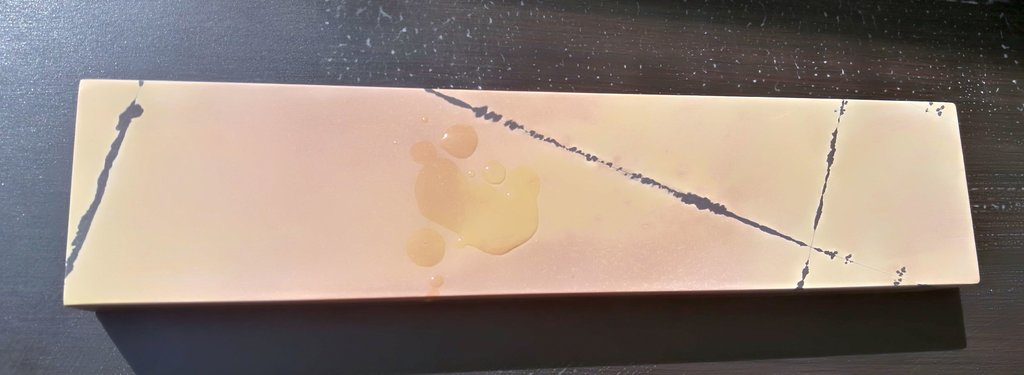
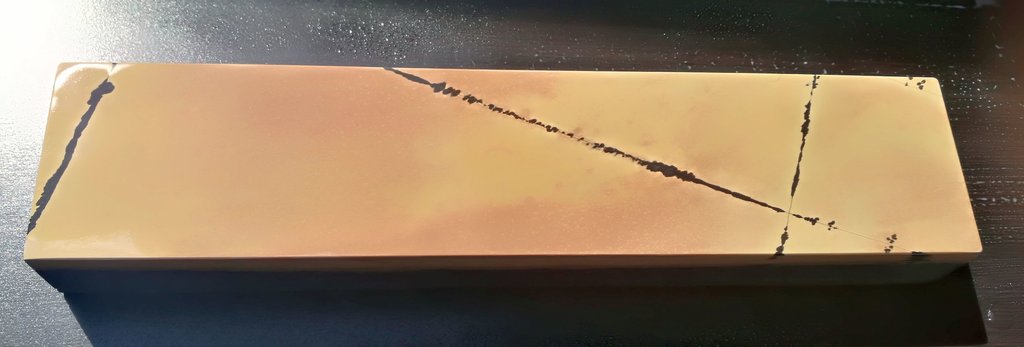
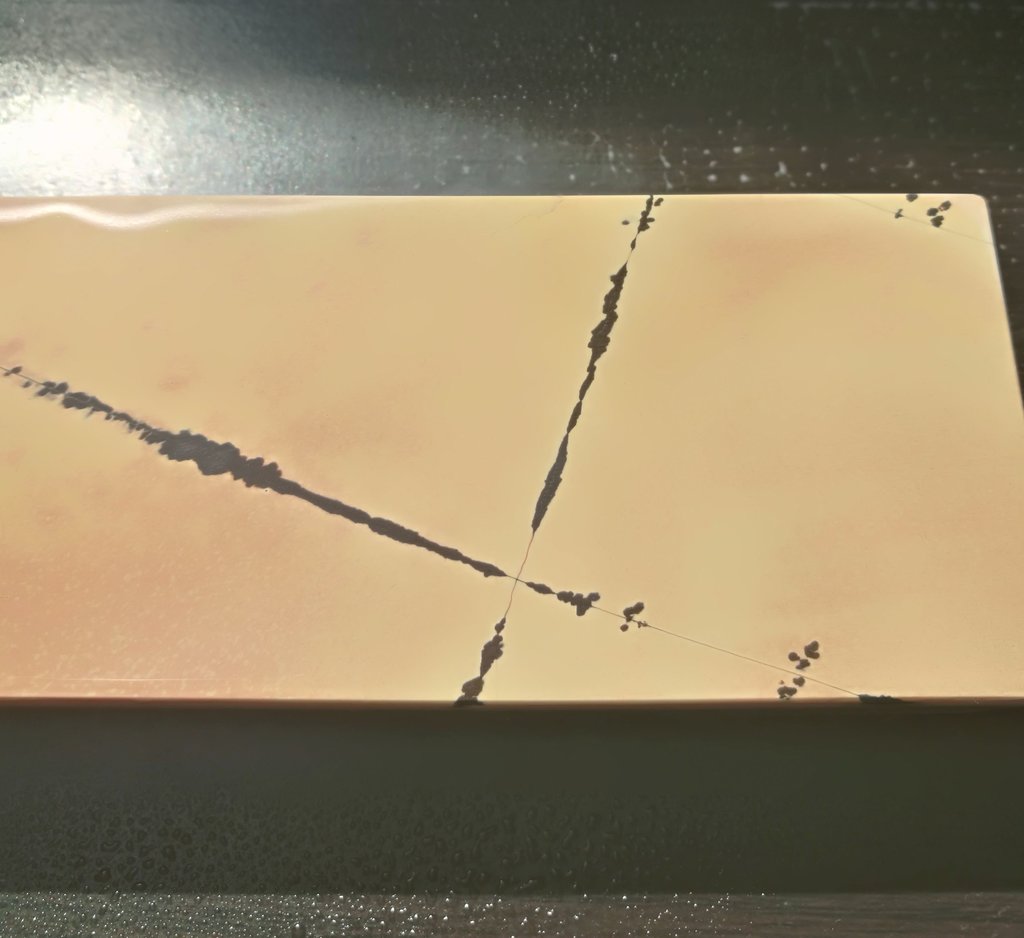
Hi Seb,
very nice example you have there. Your stone is a typical La Dressante layer, which is undoubtedly one oft he best coticule layers. Very fast and quite fine, producing excellent razor edges. The red taint and the manganese dots and lines are typical for La Dressante. The Dressante layer existe in both deposits of the coticule area that means the stones could basically come from any of the old quarries.
The Dressante layer delivers some of the best but also nicest coticules in general. So most of (if not all) the kosher coticules that Maurice Celis sells nowadays are from the Dressante layer (pure white stones - but also such with a red taint, which are also considerred kosher, if the surface is without faults). And there are the beautiful tiger striped Dressante stones. And of course this ones, that you showed in your post.
I got a stone that is nearly identical to yours. Of course the manganese lines are somehow different, but it fits perfectly in appearance, color and size. It might be a sister to yours and maybe once came from the same batch.
View attachment 1006220
Regards Peter
Set out to lap the coticule this morning. The stone had a really big dish in it.
View attachment 1006284
View attachment 1006285 At first I was planning on cutting off the edges to save the yellow side. After examining it it was clear that no matter what I did I would lap off into the bbw. Set off on the sidewalk to rough work, took a while to do but I was slowly getting there. View attachment 1006287
Finally finished it and will clean it up more with the atoma 1200 and then some slurry stones.
View attachment 1006286
Thanks. I will be putting it through the tests later today.Well done and congratulations! One of the biggest coticule bench stones I have ever seen. I hope it is very fine and will hone you razors very well. Good luck.
